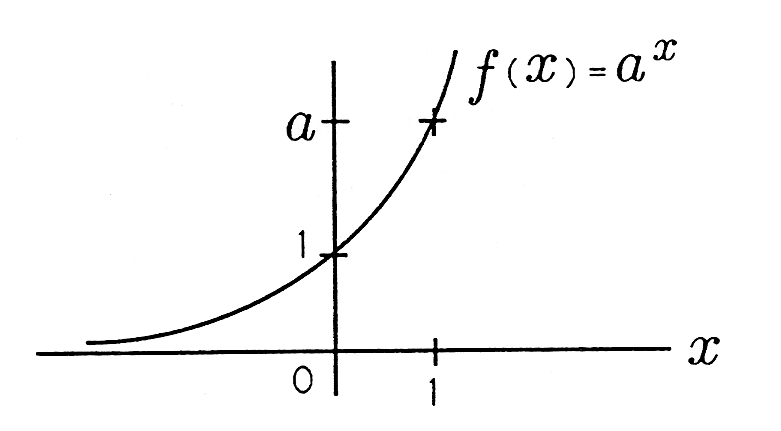| << Chapter < Page | Chapter >> Page > |
Many of you know the number e as the base of the natural logarithm, which has the value 2.718281828459045. . . . What you may not know is thatthis number is actually defined as the limit of a sequence of approximating numbers. That is,
This means, simply, that the sequence of numbers , . . . , gets arbitrarily close to 2.718281828459045. . . . But why should sucha sequence of numbers be so important? In the next several paragraphs we answer this question.
Derivatives and the Number . The number arises in the study of derivatives in the following way. Consider the function
and ask yourself when the derivative of equals . The function is plotted in [link] for . The slope of the function at point is

If there is a special value for a such that
then would equal . We call this value of the special (or exceptional) number and write
The number would then be . Let's write our condition that converges to 1 as
or as
Our definition of amounts to defining and allowing in order to make . With this definition for , it is clear that the function is defined to be :
By letting we can write this definition in the more familiar form
This is our fundamental definition for the function . When evaluated at , it produces the definition of given in [link] .
The derivative of is, of course,
This means that Taylor's theoremmay be used to find another characterization for
:
When this series expansion for is evaluated at , it produces the following series for :
In this formula, ! is the product . Read ! as " factorial.”
Compound Interest and the Function . There is an example from your everyday life that shows even more dramatically how the function arises. Suppose you invest dollars in a savings account that offers % annual interest. (When , this is 1%; when , this is 10% interest.) If interest is compounded only once per year, you have the simple interest formula for , the value of your savings account after 1 compound (in this case, 1 year):
. This result is illustrated in the block diagram of Figure 2.2(a). In this diagram,your input fortune V 0 is processed by the “interest block” to produce your output fortune V 1 . If interest is compounded monthly, then the annual interest is divided into 12 equal parts and applied 12 times. The compounding formulafor V 12 , the value of your savings after 12 compounds (also 1 year) is
This result is illustrated in [link] . Can you read the block diagram? The general formula for the value of an account that is compounded n times per year is
is the value of your account after compounds in a year, when the annual interest rate is 100x%.


Bankers have discovered the (apparent) appeal of infinite, or continuous, compounding:
We know that this is just
So, when deciding between % interest compounded daily and interest compounded continuously, we need only compare
We suggest that daily compounding is about as good as continuous compounding. What do you think? How about monthly compounding?

Notification Switch
Would you like to follow the 'A first course in electrical and computer engineering' conversation and receive update notifications?